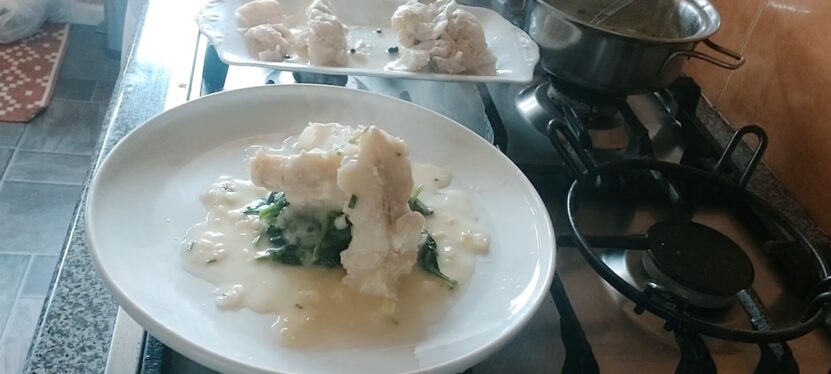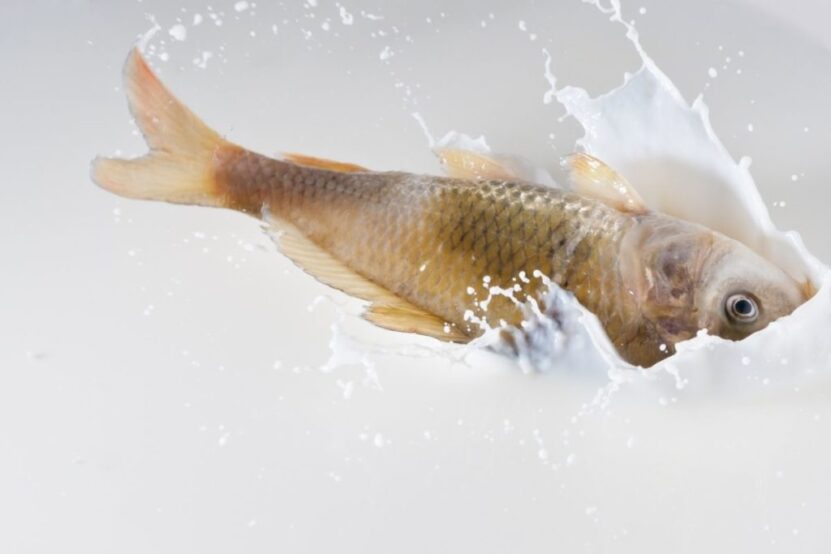The debate over whether consuming fish and milk together is safe and healthy is a topic shrouded in cultural beliefs, medical advice, and culinary practices. This extensive exploration will provide insights into the origins of this belief, details of scientific research on the matter, and consider various dietary customs worldwide.
Is it a Safe Combination?

The question of whether it is safe to consume fish and milk together is a topic of significant debate. To address this concern, we need to look into various aspects including nutritional science, potential health risks, and dietary practices.
Insights from Nutritionists
From a nutritional standpoint, they are both rich in essential nutrients. Fish is a great source of omega-3 fatty acids and protein, while milk provides calcium, vitamin D, and additional protein. There is no inherent nutritional reason that these foods cannot be consumed together.
Are There Any Health Risks?
Medical research has not identified any specific health risks associated with the consumption of fish and milk together. Despite various cultural beliefs suggesting potential negative effects, there is no scientific evidence supporting the idea that this combination is harmful.
Cultural Beliefs vs. Scientific Facts
- Cultural Beliefs: Some cultures have long-held beliefs that combining them can lead to health issues, like skin disorders. However, these beliefs are not supported by modern scientific research.
- Lack of Scientific Corroboration: The medical and scientific community has not found any physiological basis for these concerns. The digestion of proteins and other nutrients does not typically cause adverse reactions when consumed together.
Allergies and Individual Sensitivities
- Food Allergies: For individuals with specific food allergies or intolerances (such as lactose intolerance or allergies), consuming either of these foods could cause problems. However, these issues are related to the individual food sensitivities, not the combination of fish and milk.
- Personal Digestive Comfort: Some people might experience indigestion or discomfort when consuming certain food combinations due to personal digestive sensitivities. This varies from person to person and is not indicative of a general health risk.
Preparation and Hygiene
- Food Safety: The primary concern should be proper food preparation and hygiene. Ensuring that meat is fresh and properly cooked, and that milk is pasteurized or otherwise safe to drink, is crucial to prevent foodborne illnesses. There are other safety concerns about seafood. For example, which types are safe to eat raw.
Culinary Practices Around the World
Contrary to certain beliefs, many global cuisines successfully integrate them. For instance, in Italian and Indian cuisines, dishes combining fish with dairy products like cheese or yogurt are not uncommon and are well-received.
French Cuisine

- Fish Quenelles: These are light, fluffy dumplings made with a mixture of creamed fish, usually pike, mixed with breadcrumbs, eggs, and milk. They are poached and often served with a creamy sauce.
- Brandade de Morue: This is a dish made from salt cod (bacalao) and milk. The cod is soaked in milk to remove the salt and then blended with milk or cream to create a rich, smooth paste, often served on bread or toast.
Italian Cuisine

- Baccalà Mantecato: A traditional Venetian dish where salted cod is cooked and whipped with milk or cream until it becomes a smooth, creamy spread, often served on polenta or crusty bread.
- Fish Risotto: While not always made with milk, some versions of fish risotto include a touch of cream or milk towards the end of cooking to add richness to the dish.
British Cuisine

- Fish Pie: A classic British dish that typically consists of a mix of fish in a white sauce or béchamel sauce made from milk, cheese, and herbs, topped with mashed potatoes and baked until golden.
Scandinavian Cuisine

- Lutefisk: This traditional Nordic dish is made from aged stockfish or dried/salted whitefish and lye. It is often rehydrated in a sequence of water baths, with the final bath often including milk to mitigate the harsh alkalinity of the lye.
Eastern European Cuisine

- Gefilte Fish: A Jewish dish where ground fish is mixed with eggs, breadcrumbs, and sometimes milk, then boiled in fish stock. It’s often served with horseradish and traditionally eaten during Jewish holidays like Passover.
Why People Don’t Like This Combination?
The aversion to combining them in one’s diet often stems from a mix of cultural beliefs, traditional medical systems, and personal preferences. Here are some key reasons why some people might avoid this combination:
Cultural and Religious Beliefs
In various cultures, particularly within certain Jewish and Indian communities, there are long-standing beliefs and dietary laws that advise against consuming them together. These beliefs are often rooted in religious or traditional practices rather than scientific evidence.
Historical Medical Systems
Traditional medical systems like Ayurveda (ancient Indian medicine) suggest that combining fish and milk can lead to an imbalance in the body. This belief is based on the concept that each food has its own properties and combining two contradicting properties (like the heating effect of fish and the cooling effect of milk) could be harmful.
Personal Digestive Comfort
Some individuals might find that consuming fish and milk together doesn’t agree with their digestive system. This could be due to personal sensitivities or simply a matter of personal preference.
Texture and Flavor Preferences
The combination of fish and milk might not be appealing to some due to the contrasting textures and flavors. This is more of a culinary preference than a health concern.
Psychological Factors

If people grow up with the notion that certain food combinations are harmful or taboo, they might develop a psychological aversion to these combinations, regardless of the actual risk or flavor.
Misinformation and Lack of Knowledge
Sometimes, misinformation or a lack of understanding about nutrition can lead to unfounded fears about certain food combinations. Without scientific backing, these fears can perpetuate through generations.
Specific Health Conditions
For individuals with specific health conditions (like fish allergies, lactose intolerance, or certain digestive disorders), combining fish and milk might exacerbate their symptoms. However, this is related to the individual’s health condition and not a general issue with the food combination.
FAQs
What dairy goes with seafood?
Some dairy products, such as cheese, cream, and butter, can go well with seafood if they are used in moderation and paired with the right ingredients. However, some people may avoid mixing dairy and seafood for dietary, religious, or health reasons.
Can I eat ice cream after fish?
There is no scientific evidence that eating ice cream after fish is harmful or causes any health problems. However, some people may have a personal preference or cultural belief that discourages this combination.
Is it OK to drink milk after eating egg?
Yes, it is OK to drink milk after eating eggs, as long as they are cooked properly. Cooked eggs and milk are both good sources of protein and other nutrients, and they do not interfere with each other’s digestion. However, raw eggs and milk may pose some health risks, such as bacterial infection, food poisoning, or biotin deficiency.
Why not eat meat with dairy?
Some people may not eat meat with dairy for religious reasons, such as following the kosher laws of Judaism, which prohibit mixing meat and dairy products. Other people may avoid this combination for ethical, environmental, or health reasons, such as reducing animal suffering, greenhouse gas emissions, or cholesterol intake.
Why we should not eat salt with milk?
According to Ayurveda, an ancient system of medicine from India, salt and milk are incompatible foods that can cause indigestion, bloating, and acidity. Salt can also reduce the calcium absorption from milk and affect the blood pressure. However, there is not much scientific evidence to support this claim, and some people may not experience any adverse effects from this combination.
Last Words
The reluctance to eat fish and milk together is influenced more by cultural, historical, and personal factors than by scientific evidence of health risks. It’s important to distinguish between these influences and make dietary choices based on personal health needs, preferences, and scientific understanding.
